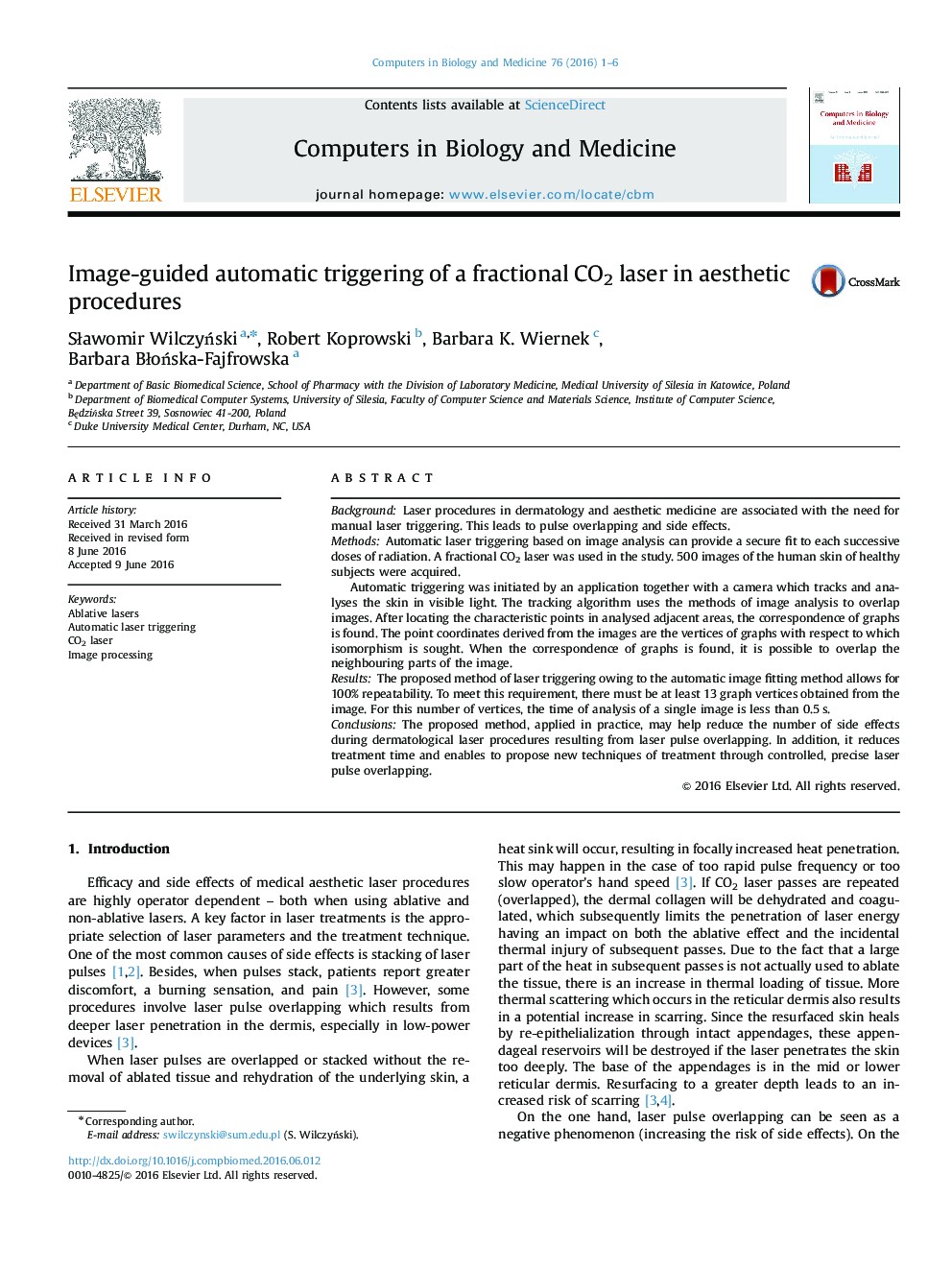| Article ID | Journal | Published Year | Pages | File Type |
|---|---|---|---|---|
| 504759 | Computers in Biology and Medicine | 2016 | 6 Pages |
BackgroundLaser procedures in dermatology and aesthetic medicine are associated with the need for manual laser triggering. This leads to pulse overlapping and side effects.MethodsAutomatic laser triggering based on image analysis can provide a secure fit to each successive doses of radiation. A fractional CO2 laser was used in the study. 500 images of the human skin of healthy subjects were acquired.Automatic triggering was initiated by an application together with a camera which tracks and analyses the skin in visible light. The tracking algorithm uses the methods of image analysis to overlap images. After locating the characteristic points in analysed adjacent areas, the correspondence of graphs is found. The point coordinates derived from the images are the vertices of graphs with respect to which isomorphism is sought. When the correspondence of graphs is found, it is possible to overlap the neighbouring parts of the image.ResultsThe proposed method of laser triggering owing to the automatic image fitting method allows for 100% repeatability. To meet this requirement, there must be at least 13 graph vertices obtained from the image. For this number of vertices, the time of analysis of a single image is less than 0.5 s.ConclusionsThe proposed method, applied in practice, may help reduce the number of side effects during dermatological laser procedures resulting from laser pulse overlapping. In addition, it reduces treatment time and enables to propose new techniques of treatment through controlled, precise laser pulse overlapping.
Graphical abstractFigure optionsDownload full-size imageDownload high-quality image (179 K)Download as PowerPoint slide
